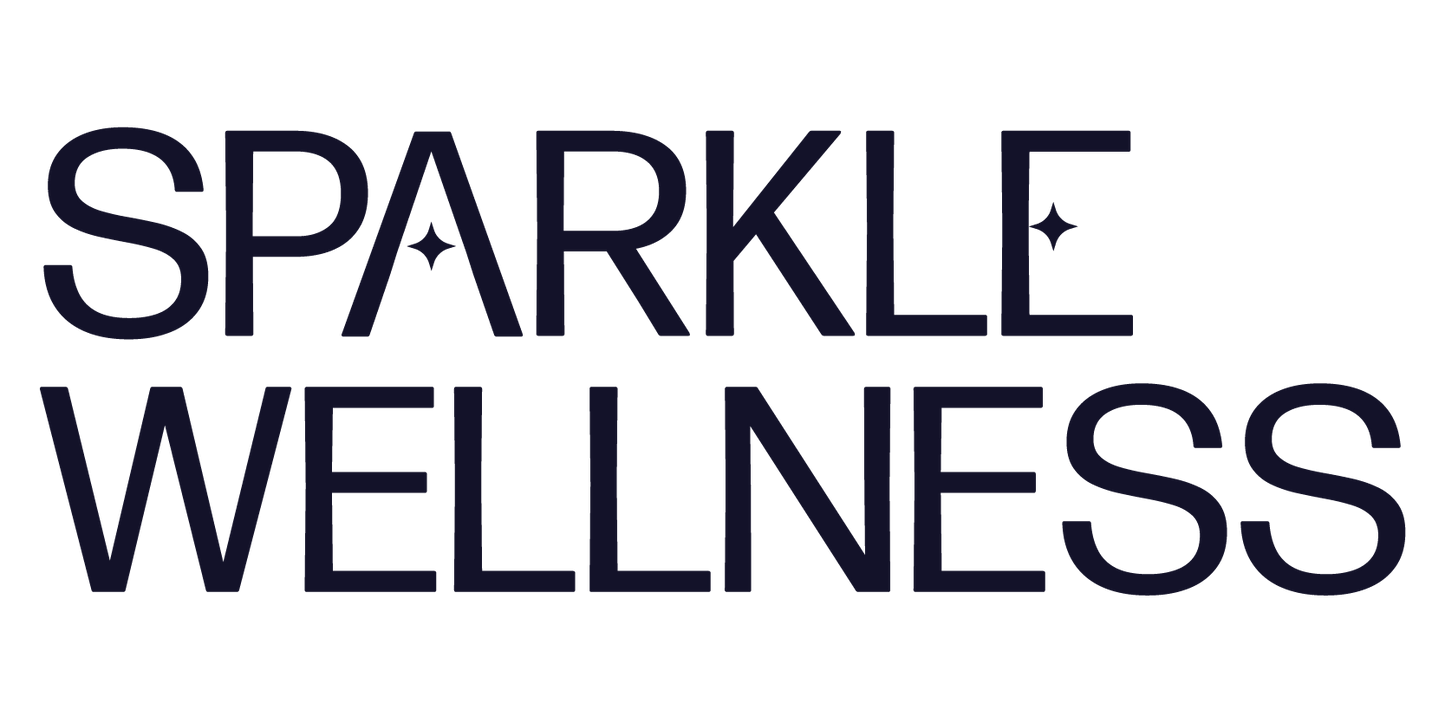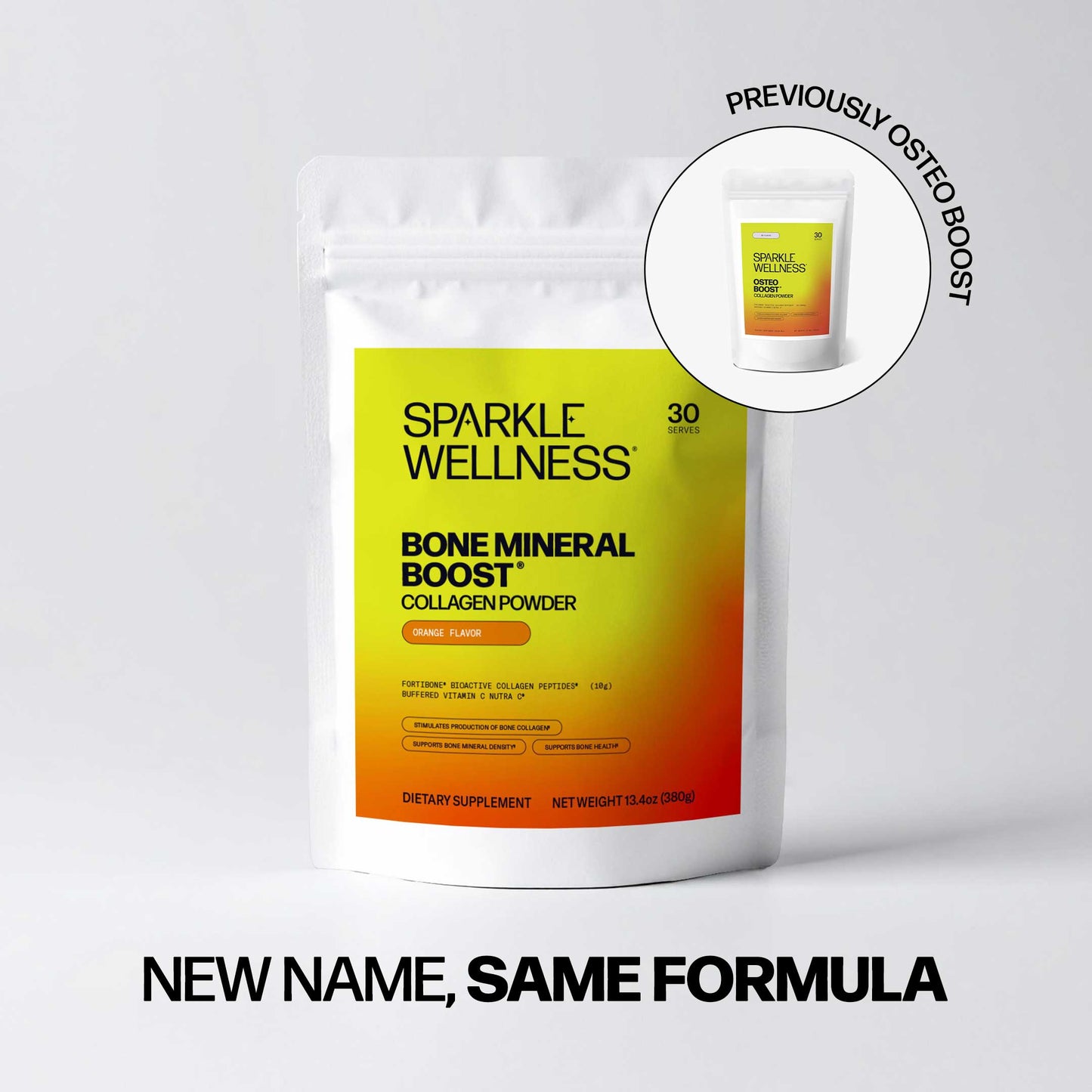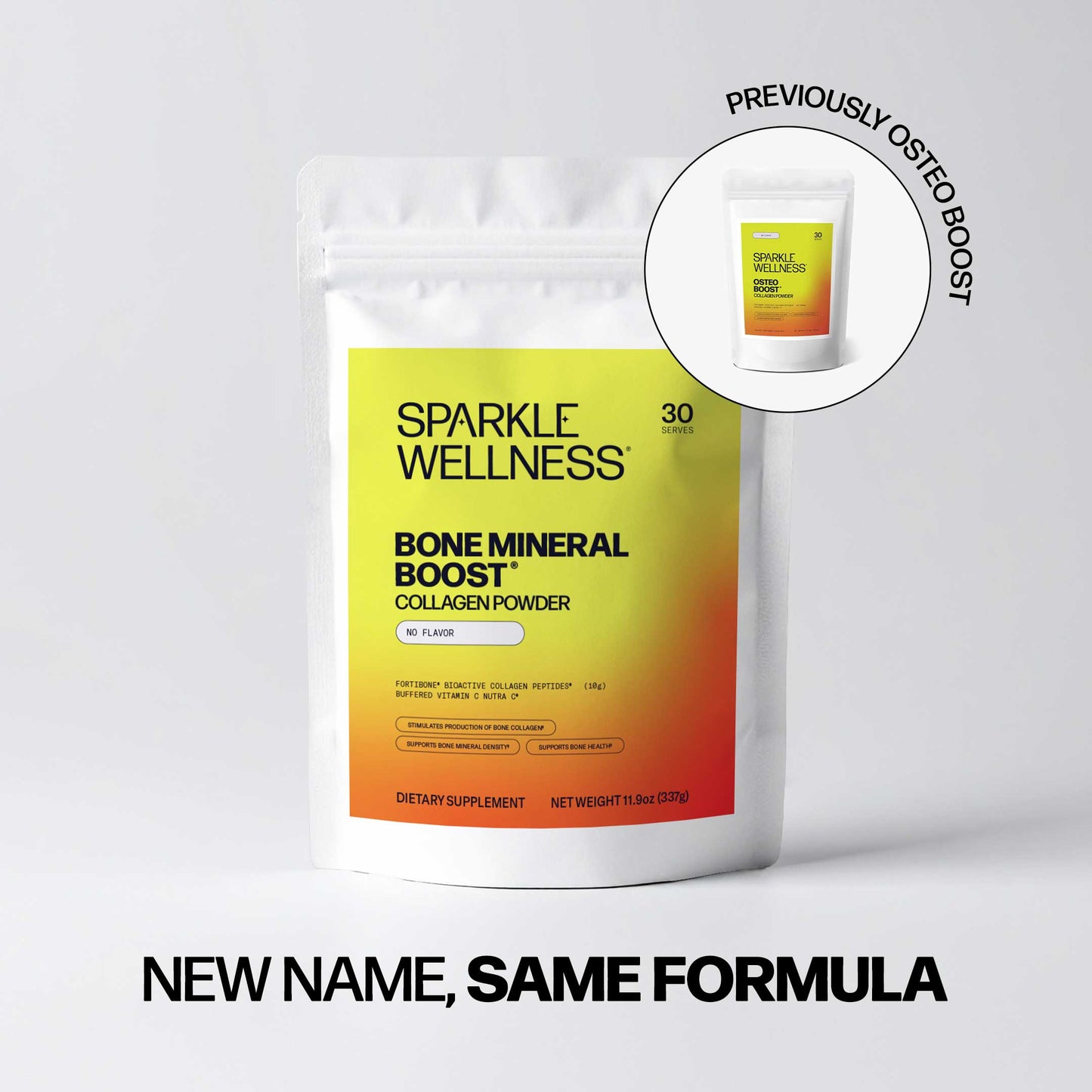YOUR BONES: THE REAL MEASURE OF LONG-TERM WELLNESS
Yet bone health often goes unnoticed by many of us until a fracture or diagnosis reveals underlying weakness. Research shows that maintaining bone density and strength early can reduce fracture risk, support muscular function and contribute to long-term wellness and longevity. By better understanding and caring for your bones, you can invest in your ability to live fully.
UNDERSTANDING WHAT MAKES HEALTHY BONES
Our bones are composed primarily of collagen and non-collagen proteins together with calcium and supporting minerals such as magnesium. They do most of their development and growth during childhood and adolescence. During childhood, new bone formation exceeds resorption, leading to a net gain in bone mass¹. Peak bone density is usually reached by around age 302, setting up our reserves for the future.
SCIENCE SIMPLIFIED
Resorption is the process where osteoclasts, or specialized bone cells, break down or absorb bone tissue. This is necessary to clear away old, damaged cells and make way for the new.
Formation is the process of creating new bone tissue. The balance between the two processes is crucial for healthy cell turnover to harmonize new bone tissue levels with the removal of old bone tissue.
After that, things change, and the balance slowly shifts. Once women reach 40 years old, resorption gradually begins to exceed formation, resulting in a gradual decline in bone density and integrity.
This imbalance accelerates in women after menopause and in men with declining testosterone levels, leading to progressive bone loss over time. In fact, numerous studies show that a woman can lose up to 20% of her bone mass in the five years around menopause. When new bone formation starts to decline, it leads to weaker, more brittle bones and can also affect joints and flexibility, and increase the risk of fractures.
Bones are meant to be dense, strong, flexible and capable of self-repair through continuous remodelling. Many factors, including genetics and lifestyle factors such as diet and exercise, shape their strength and structure. While we can’t see them, signs of healthy bones may include strong posture, ease of movement, steady balance and minimal joint discomfort.
Maintaining this foundation is essential not only for mobility but also for protecting vital organs and supporting internal systems like mineral regulation, immune function and blood cell production.
SUPPORTING YOUR BONES FOR LIFE
Strong bones help maintain independence and physical activity, reducing the risk of falls and fractures, which are linked to increased morbidity and mortality in older adults.
Maintaining bone strength through proper nutrition, exercise and early preventive measures promotes longer, healthier lives by reducing frailty, disability and disease incidence. With more research in the area, we can pinpoint some key activities to help improve bone health.
1) Resistance training is your bones’ best workout
Resistance training, whether it’s weightlifting, resistance bands or bodyweight exercises, applies targeted stress that stimulates bone-building cells. This mechanical load encourages new bone formation, slows age-related bone loss and builds denser, stronger bones that are more resilient to fractures3.
Research suggests that 30–60 minutes per week, spread across 2–3 sessions, improves bone density, muscle strength, balance and coordination, collectively helping prevent falls and maintain independence4,5,6. These benefits extend beyond the skeleton, as resistance training significantly improves healthspan by reducing all-cause mortality and the risk of developing serious chronic diseases.
2) Collagen: Building blocks for strong bones
While the hype around collagen has focused more on wrinkles, it's important to note that collagen is also an essential building block of bones. As collagen production declines, bones are at risk of becoming more fragile, weakening and breaking.
Collagen forms the framework of bones, providing flexibility and strength while supporting mineralization. Clinical studies show that daily supplementation with 5 grams of bioactive collagen peptides (FORTIBONE) for 12 months can significantly improve bone mineral density in the spine and hip, particularly in postmenopausal women at risk for osteoporosis7.
Bioactive collagen peptides are highly absorbable and work by stimulating osteoblasts and supporting new bone formation, thereby addressing the imbalance and enhancing the effects of calcium and vitamin D8.
Long-term use (up to four years) of supplemental bioactive collagen peptides leads to sustained increases in bone density and fewer fractures9, making collagen supplementation a key nutritional strategy for supporting mobility and overall quality of life.
3) Healthy lifestyle habits every day
Everyday choices have a big impact on bone health. Consider avoiding smoking and limiting alcohol to help prevent bone loss. Managing chronic conditions and supporting healthy hormone balance can also protect against accelerated decline.
Prioritizing sleep allows your bones to repair and remodel, and balanced sun exposure supports natural vitamin D production without compromising skin health. Combined with nourishing foods, these consistent habits create a foundation that supports strong bones, better mobility and overall vitality.
Bone health isn’t about reacting to a diagnosis. Prioritizing bone health is building resilience for now and in the future. With the right balance of effective collagen supplementation, minerals, resistance exercises and consistent movement, you can play an active role in preserving your bone density, mobility, and, most importantly, your confidence and vitality at every age.

REFERENCES
- Lu, J., Shin, Y., Yen, M., Sun, S. S. Peak bone mass and patterns of change in total bone mineral density and bone mineral contents from childhood into young adulthood. Journal of Clinical Densitometry. 2019;19(2):180-191. doi: 10.1016/j.jocd.2014.08.001
- Sheng, B., Li, X., Nussler, A. K., Zhu, S. The relationship between healthy lifestyles and bone health: A narrative review. Medicine. 2021;100(8). doi: 10.1097/MD.0000000000024684
- Burtscher, J., Strasser, B., D'Antona, G., Millet, G. P., Burtscher, M. How much resistance exercise is beneficial for healthy aging and longevity? J Sport Health Sci. 2023;12(3):284-286. doi: 10.1016/j.jshs.2022.11.004
- Momma, H., Kawakami, R., Honda, T., Sawada, S. S. Muscle-strengthening activities are associated with lower risk and mortality in major non-communicable diseases: A systematic review and meta-analysis of cohort studies. British Journal of Sports Medicine. 2022;56(13):755-763. doi: 10.1136/bjsports-2021-105061
- Saeidifard, F., Medina-Inojosa, J. R., West, C. P., Olson, T. P., Somers, V. K., Bonikowske, A. R., Lopez-Jimenez, F. The association of resistance training with mortality: A systematic review and meta-analysis. Eur J Prev Cardiol. 2019;26(15):1647-1665. doi: 10.1177/2047487319850718
- Shailendra, P., Baldock, K. L., Li, L. S. K., Bennie, J. A., Boyle, T. Resistance training and mortality risk: A systematic review and meta-analysis. American Journal of Preventive Medicine. 2022;63(2):277-285. doi: 10.1016/j.amepre.2022.03.020
- König, D., Oesser, S., Scharla, S., Zdzieblik, D., Gollhofer, A. Specific collagen peptides improve bone mineral density and bone markers in postmenopausal women - a randomized controlled study. Nutrients. 2018:10(1). doi: 10.3390/nu10010097
- Argyrou, C., Karlafti, E., Lampropoulou-Adamidou, K., Tournis, S., Makris, K., Trovas, G., Triantafyllopoulos, I. K. Effect of calcium and vitamin D supplementation with and without collagen peptides on bone turnover in postmenopausal women with osteopenia. Journal of Musculoskeletal & Neuronal Interactions. 2020;20(1):12-17
-
Zdzieblik, D., Oesser, S., & König, D. (2021). Specific bioactive collagen peptides in osteopenia and osteoporosis: Long-term observation in postmenopausal women. J Bone Metab. 2021; 28(3):207-213. doi: 10.11005/jbm.2021.28.3.207





